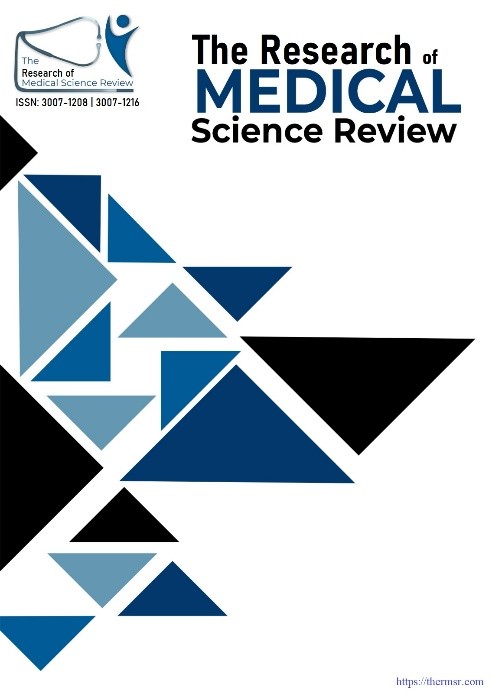PRETERM DELIVERY AND LOW BIRTH WEIGHT IN PREGNANT WOMEN WITH ANEMIA (MATERNAL ANEMIA) AT SHAIKH ZAID HOSPITAL, SMBBMU LARKANA
Main Article Content
Abstract
BACKGROUND: Anemia during pregnancy poses a serious health risk, as it increases the likelihood of complications such as premature delivery and babies being born with low birth weight. The more severe the anemia, the greater the risk to both mother and baby.
OBJECTIVE: This study aimed to assess how often preterm birth and low birth weight occur among anemic pregnant women receiving care at Shaikh Zaid Women Hospital, SMBBMU Larkana.
STUDY DESIGN: Descriptive cross-sectional study.
SETTING: Department of Obstetrics and Gynecology, Shaikh Zaid Women Hospital, SMBBMU Larkana.
STUDY DURATION: Six months, from Nov 14, 2024, to May 13, 2025.
SAMPLING TECHNIQUE: Non-probability consecutive sampling
SAMPLE SIZE: A total of 152 pregnant women diagnosed with anemia were included.
SUBJECTS AND METHODS: Women between the ages of 18 and 45 years, whether experiencing their first pregnancy or having had previous births, and with gestational ages between 28 and 42 weeks (determined by the last menstrual period), were enrolled. All participants had confirmed maternal anemia. Data were analyzed using descriptive statistics means and standard deviations for continuous variables and frequencies and percentages for categorical variables.
RESULTS: Preterm delivery was observed in 84 women (55.2%), while 68 babies (44.7%) were born with low birth weight. A majority of participants were from urban areas (52.0%) and had no formal education (28.9%). Most were unbooked (67.1%) and multiparous (56.6%). The lower socioeconomic group accounted for 41.4% of the sample. Other notable findings included the presence of smoking (36.8%), obesity (55.9%), NICU admissions (32.9%), stillbirths (56.2%), hypertension (52.6%), diabetes (64.5%), early neonatal deaths (55.9%), low Apgar scores (61.8%), and pre-eclampsia (60.5%). Statistically significant associations with preterm delivery and low birth weight were found for maternal age (p = 0.02), place of residence (p = 0.03), socioeconomic status (p < 0.01), obesity (p = 0.04), antenatal care status (p < 0.01), diabetes (p < 0.01), NICU admission (p < 0.01), hypertension (p = 0.01), low Apgar score (p < 0.01), and pre-eclampsia (p < 0.01). However, no significant links were observed with educational level (p = 0.49), smoking (p = 0.72), parity (p = 0.42), stillbirth (p = 0.61), or early neonatal death (p = 0.73).
CONCLUSION: Maternal anemia continues to be a major contributor to unfavorable pregnancy outcomes such as preterm delivery and low birth weight. Addressing this issue through early detection and management is essential to improving maternal and neonatal health.
BACKGROUND: Anemia during pregnancy poses a serious health risk, as it increases the likelihood of complications such as premature delivery and babies being born with low birth weight. The more severe the anemia, the greater the risk to both mother and baby.
OBJECTIVE: This study aimed to assess how often preterm birth and low birth weight occur among anemic pregnant women receiving care at Shaikh Zaid Women Hospital, SMBBMU Larkana.
STUDY DESIGN: Descriptive cross-sectional study.
SETTING: Department of Obstetrics and Gynecology, Shaikh Zaid Women Hospital, SMBBMU Larkana.
STUDY DURATION: Six months, from Nov 14, 2024, to May 13, 2025.
SAMPLING TECHNIQUE: Non-probability consecutive sampling
SAMPLE SIZE: A total of 152 pregnant women diagnosed with anemia were included.
SUBJECTS AND METHODS: Women between the ages of 18 and 45 years, whether experiencing their first pregnancy or having had previous births, and with gestational ages between 28 and 42 weeks (determined by the last menstrual period), were enrolled. All participants had confirmed maternal anemia. Data were analyzed using descriptive statistics means and standard deviations for continuous variables and frequencies and percentages for categorical variables.
RESULTS: Preterm delivery was observed in 84 women (55.2%), while 68 babies (44.7%) were born with low birth weight. A majority of participants were from urban areas (52.0%) and had no formal education (28.9%). Most were unbooked (67.1%) and multiparous (56.6%). The lower socioeconomic group accounted for 41.4% of the sample. Other notable findings included the presence of smoking (36.8%), obesity (55.9%), NICU admissions (32.9%), stillbirths (56.2%), hypertension (52.6%), diabetes (64.5%), early neonatal deaths (55.9%), low Apgar scores (61.8%), and pre-eclampsia (60.5%). Statistically significant associations with preterm delivery and low birth weight were found for maternal age (p = 0.02), place of residence (p = 0.03), socioeconomic status (p < 0.01), obesity (p = 0.04), antenatal care status (p < 0.01), diabetes (p < 0.01), NICU admission (p < 0.01), hypertension (p = 0.01), low Apgar score (p < 0.01), and pre-eclampsia (p < 0.01). However, no significant links were observed with educational level (p = 0.49), smoking (p = 0.72), parity (p = 0.42), stillbirth (p = 0.61), or early neonatal death (p = 0.73).
CONCLUSION: Maternal anemia continues to be a major contributor to unfavorable pregnancy outcomes such as preterm delivery and low birth weight. Addressing this issue through early detection and management is essential to improving maternal and neonatal health.
Downloads
Article Details
Section

This work is licensed under a Creative Commons Attribution-NonCommercial-NoDerivatives 4.0 International License.
